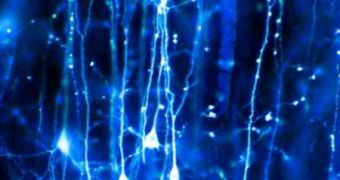Emulating the way the human brain solves complex problems has been a long-standing goal in the field of electronics, and an international collaboration of scientists may have just set the foundation for doing just that. Usually, in digital computers, circuits that process information are static. This does not happen in the human brain, where our circuits, the neurons, adapt and evolve constantly when dealing with advanced problems. For the first time ever, researchers managed to create an organic molecular layer that can solve complex problems using these two traits.
According to the team, featuring scientists from the United States and Japan, the organic layer they developed can solve many problems on the same grid, which is something even supercomputers cannot do. Another thing that the innovation is better at than the most advanced machines today is the number of bits of information it can process at the same time. While supercomputers can only handle one bit at a time in each individual channel, the organic layer is capable of instantaneously changing around 300 bits, which makes it remarkably parallel.
Because of its monolayer molecular structure, the new device can basically heal itself if a defect arises during calculations. Researchers say that they endowed it with the ability to self-organize, which is remarkable for such a small construct. This is another trait for which the science team turned to the human brain for inspiration. In the cortex, if a group of neurons is involved in a process, and one of them dies, then another immediately takes its place, ensuring a steady supply of resources so that the task at hand is completed. No digital computer in the world today has this ability, the team explains.
The group will continue to work on their innovation, in hope of getting it ready for market applications as soon as possible. The experts say that additional research will make the organic layer even more efficient at solving complex problems. The lead author of the investigation was expert Anirban Bandyopadhyay, who is based at the National Institute for Materials Science, a division of the National Institute of Information and Communication Technology, in Japan. Details of the study are published in the latest issue of the esteemed scientific journal Nature Physics.

 14 DAY TRIAL //
14 DAY TRIAL //